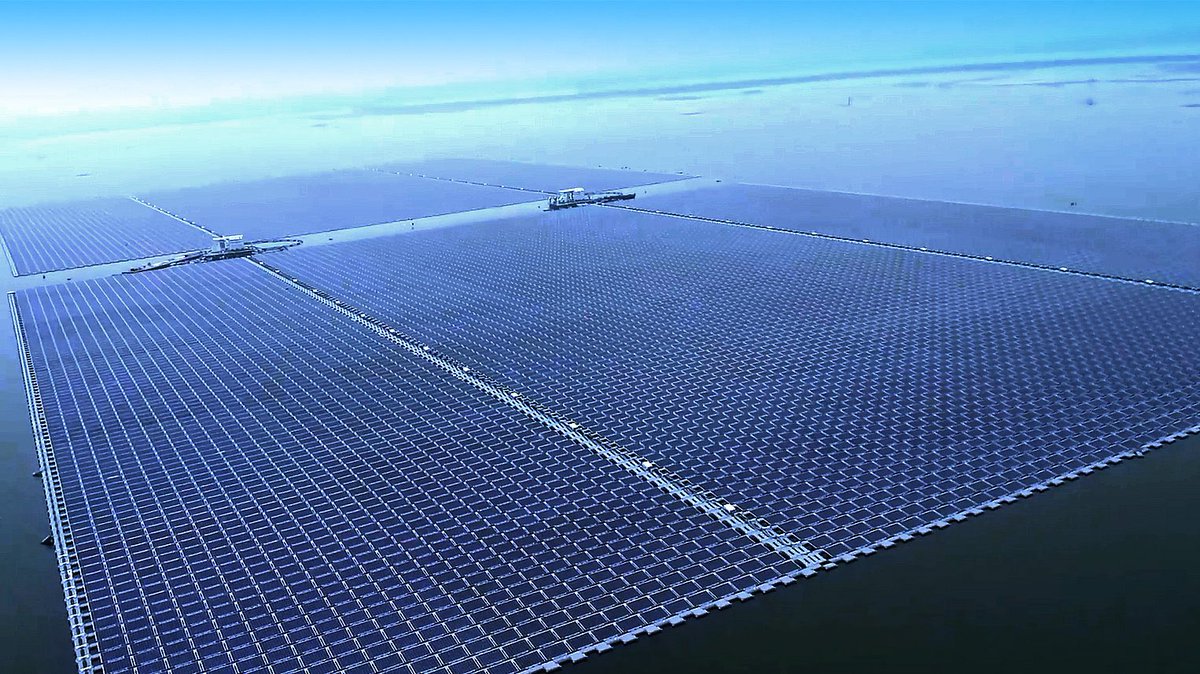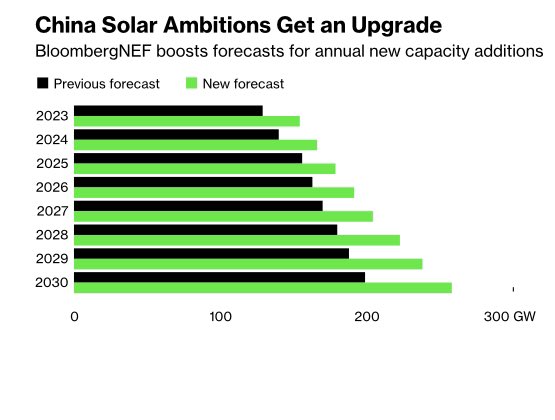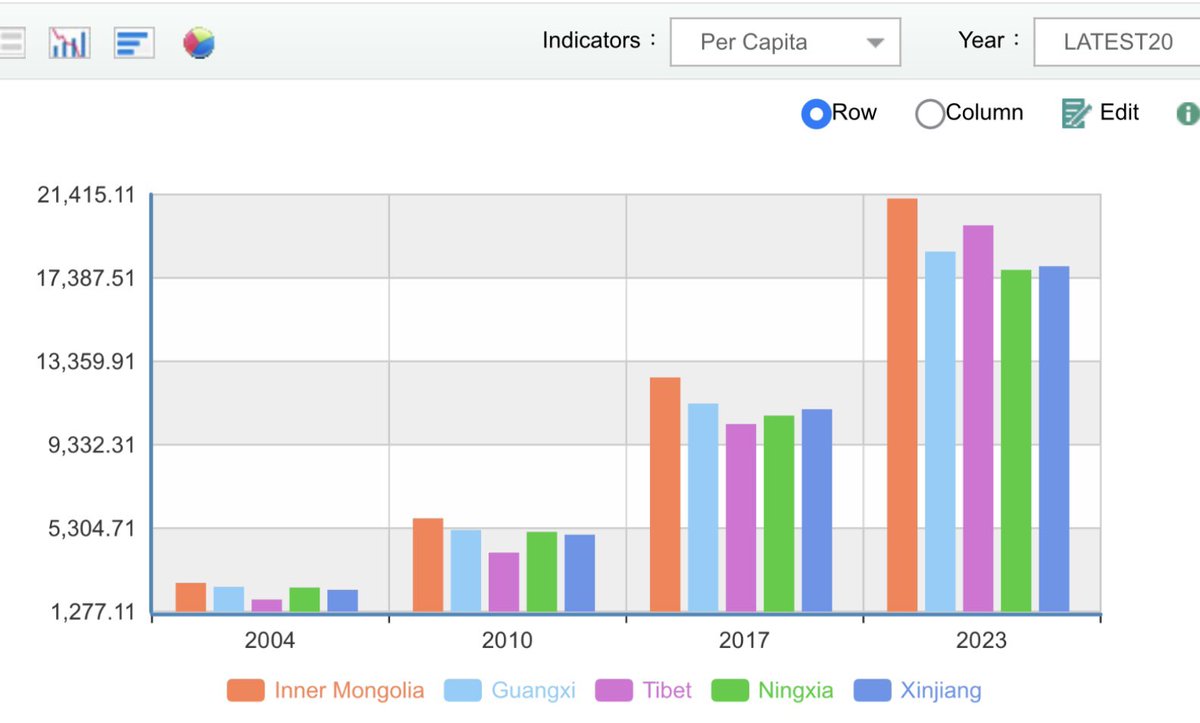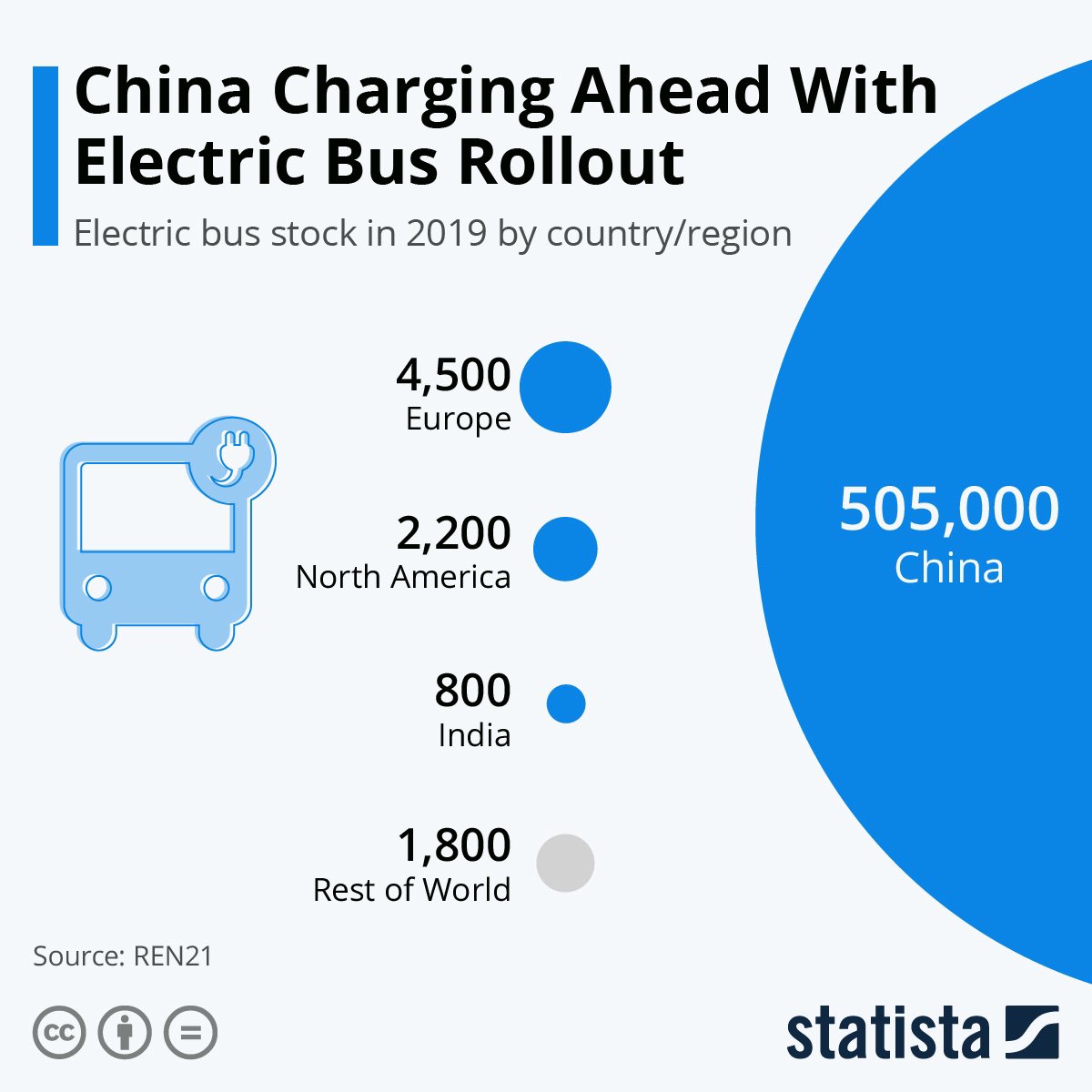The progress China has made in renewable energy just THIS YEAR makes the entire rest of the world look like it's standing still.
I wrote in December that to call China the "world leader in renewable energy" was a colossal understatement.
That’s even more true today.
Thread 🧵


I wrote in December that to call China the "world leader in renewable energy" was a colossal understatement.
That’s even more true today.
Thread 🧵


Even the Western press considers the PRC's climate target to be all-important to preventing complete global disaster. It was estimated to reduce projected temperature by 0.3 degrees Celsius, the largest *drop* ever calculated by climate models.
foreignpolicy.com/2020/09/25/xi-…
foreignpolicy.com/2020/09/25/xi-…
Climate science groups called it the "most important announcement on global climate policy in at least the last five years."
Anyone doubting that the PRC is willing and capable of not just fulfilling, but exceeding, its goals is not paying attention.
climateactiontracker.org/press/china-ca…
Anyone doubting that the PRC is willing and capable of not just fulfilling, but exceeding, its goals is not paying attention.
climateactiontracker.org/press/china-ca…
Each year from 2020 to 2022, China installed about 140GW of new renewable electricity capacity, more than the US, the EU, and India put together. (A gigawatt is enough to power 750,000 homes.)
This is from November; the 2023 column was only an estimate.
ft.com/content/33ca0d…

This is from November; the 2023 column was only an estimate.
ft.com/content/33ca0d…

In December, ground was broken on the world's largest desert renewable energy project in Inner Mongolia.
The IEA estimated China would add 80GW of new solar capacity in 2023; in February, the China Photovoltaic Industry Association said between 95 and 120
reuters.com/world/china/ch…
The IEA estimated China would add 80GW of new solar capacity in 2023; in February, the China Photovoltaic Industry Association said between 95 and 120
reuters.com/world/china/ch…
Both are already wrong. In the first four months of 2023, nearly THREE TIMES as much new solar capacity had been installed than in the same period in 2022. China's NEW solar capacity installed this year will exceed the entire TOTAL in the US.




In May, the chairman of Tongwei Solar predicted that new installations might fall between 200 and 300 gigawatts in 2024—almost TWICE the current US total.
bloomberg.com/news/articles/…
bloomberg.com/news/articles/…
China of course builds more solar panels than the rest of the world combined—in 2021, over 80% of all stages of solar photovoltaic manufacturing occurred in China—but only a minority of them are installed IN China, which had only 36% of global demand.
iea.org/reports/solar-…

iea.org/reports/solar-…

Instead, they end up in places like Jujuy, Argentina, where the local government, turned down by US and European investors, reached out to China for funding to build a 300-megawatt solar farm. According to Reuters, it was ready to begin operating by 2019.
reuters.com/article/us-arg…
reuters.com/article/us-arg…
It's not just solar energy that China does well. In 2021, China installed more offshore wind capacity in one year than the rest of the world combined had in the past five. As of January 2022, China operated half of all the world’s offshore wind turbines.
forbes.com/sites/davidrve…
forbes.com/sites/davidrve…
According a report by Global Energy Monitor in June, China is currently on track to DOUBLE its entire renewable energy capacity by 2025—five years earlier than the government's original target date of 2030.
theguardian.com/world/2023/jun…
theguardian.com/world/2023/jun…
China’s “nuclear pipeline” or the total capacity of all its new reactors under development, is also as big as the rest of the world’s combined, at ~250 GW. In 2021, 19 new reactors were under construction, 43 awaiting permits, and another 166 were planned.
energymonitor.ai/sectors/power/…
energymonitor.ai/sectors/power/…
In April 2022, plans for another 6 new reactors were announced. China also has the most advanced and efficient reactors in the world, with no need for water cooling; in 2022, for example, the first “fourth-generation” reactor came online in Shandong.
powermag.com/china-starts-u…
powermag.com/china-starts-u…
According to calculations by economist Sean Starrs, the PRC controls an estimated 6% share of the world's most valuable capital.
Yet it has spent more on the energy transition than any other country since 2012.


Yet it has spent more on the energy transition than any other country since 2012.


In fact, proportional to their share, the US contribution was 0.05% of China’s in 2021.
China is the ONLY country in the world that both has enough resources to make a real difference AND is actually treating the climate emergency like it’s an emergency.
bloomberg.com/news/articles/…
China is the ONLY country in the world that both has enough resources to make a real difference AND is actually treating the climate emergency like it’s an emergency.
bloomberg.com/news/articles/…
US temperature records are being broken TODAY. Death Valley may exceed 130 degrees Fahrenheit—the highest ever recorded ANYWHERE.
But there won't be a real response from the US government. The haste and urgency shown by China are utterly foreign to it.
washingtonpost.com/weather/2023/0…
But there won't be a real response from the US government. The haste and urgency shown by China are utterly foreign to it.
washingtonpost.com/weather/2023/0…
Energy is only one aspect of the climate solution, though; China is ALSO far and away the world leader in EVERY OTHER aspect.
Since 1980, China doubled its forest coverage, planting more new trees than the rest of the world combined.
Since 1980, China doubled its forest coverage, planting more new trees than the rest of the world combined.

Per the UN Food and Agriculture Organization, between 2010 and 2020 China had an average annual net gain in forest area of almost 2 million hectares, over 4 times as much as Australia’s (2nd-largest) and nearly 20 times as much as the United States’.
fao.org/3/ca9825en/CA9…

fao.org/3/ca9825en/CA9…

In 2021, the government set a new target rate of afforestation of 36,000 square kilometers per year—or 3.6 million hectares, nearly double its previous rate, or enough new trees to cover the land area of Belgium.
reuters.com/world/china/ch…
reuters.com/world/china/ch…
China's shift to a green economy isn't just happening fast—it's still accelerating.
A pattern has emerged over the past several years where the government sets an ambitious environmental goal, then reaches it much earlier than expected.
A pattern has emerged over the past several years where the government sets an ambitious environmental goal, then reaches it much earlier than expected.
In another example, the government set a goal of electric vehicles being 20% of all new car sales by 2025.
From 2016-2018, EV sales in China jumped from 1% to 5%. They reached 20% in 2022—three years ahead of schedule. (The US finally reached 5% in 2022.)
nytimes.com/2022/09/26/bus…
From 2016-2018, EV sales in China jumped from 1% to 5%. They reached 20% in 2022—three years ahead of schedule. (The US finally reached 5% in 2022.)
nytimes.com/2022/09/26/bus…
Today, China produces more EVs than the rest of the world combined.
This required heavy state intervention; pilot programs, subsidies, government procurement, &c.
As of 2022, 98% of all electric buses in the world were deployed in Chinese cities.
sustainable-bus.com/electric-bus/e…
This required heavy state intervention; pilot programs, subsidies, government procurement, &c.
As of 2022, 98% of all electric buses in the world were deployed in Chinese cities.
sustainable-bus.com/electric-bus/e…
China's electric high-speed rail network is longer than every other country's combined, and continues to expand. In 2007 China had virtually no HSR; today, if they had been placed in one line, China's high-speed railways could wrap around the circumference of the Earth. 

It's often said that HSR "loses money."
According to the Paulson Institute in Chicago, when accounting for not just revenue but passenger time and airline trips saved, China's HSR had generated a net surplus of nearly $400 billion as of 2022.
macropolo.org/digital-projec…


According to the Paulson Institute in Chicago, when accounting for not just revenue but passenger time and airline trips saved, China's HSR had generated a net surplus of nearly $400 billion as of 2022.
macropolo.org/digital-projec…


Now, over three billion passenger trips are made on China’s railways each year.
Chinese companies have also built new high-speed rail lines that recently began operating in Laos and Indonesia, as well as many more conventional railways throughout the world.


Chinese companies have also built new high-speed rail lines that recently began operating in Laos and Indonesia, as well as many more conventional railways throughout the world.


What about carbon emissions?
As the world's most populous country as of 2022, China could only by severe underdevelopment FAIL to rank first in emissions.
Per capita, China emits less than half as much as the US.
But these are both incorrect ways to think about the problem.
As the world's most populous country as of 2022, China could only by severe underdevelopment FAIL to rank first in emissions.
Per capita, China emits less than half as much as the US.
But these are both incorrect ways to think about the problem.

It's PRODUCTION, not population, that determine emissions; a majority are driven by industry, agriculture, and freight. China's emissions are proportional to its share of world's industrial manufacturing—manufacturing that the West outsourced to China to make more profit.
Western countries' disproportionate level of consumption is at the root of this issue. They didn't solve their carbon problem, they just exported it.
China, in fact, has not yet reached its 'fair share' quota of emissions given a 1.5 degree global increase, while the US and other Western countries have already far exceeded theirs.
https://twitter.com/jasonhickel/status/1665737445546115076
Today, systems of production are globalized. All countries are part of the world-economy. It therefore makes little sense to isolate and blame the middle of the supply chain. EVERY country is complicit. Even if you don't want to be part of the problem, you'll be FORCED to.
The same isn't true for being part of the SOLUTION.
If you’re a peripheral country and you decide to stop exporting valuable raw materials, you may find yourself sanctioned, invaded, or couped. But if you start using more fossil fuels, you‘ll just get a scolding.
If you’re a peripheral country and you decide to stop exporting valuable raw materials, you may find yourself sanctioned, invaded, or couped. But if you start using more fossil fuels, you‘ll just get a scolding.
No other country is forcing China to lead the world in the conversion to a sustainable economy—in fact, the United States government has been trying to STOP it, for example by placing sanctions on China's photovoltaic manufacturing.
reuters.com/business/us-re…
reuters.com/business/us-re…
China's goal was peak emissions before 2030 and carbon-neutrality by 2060. Given how much Chinese renewables have overperformed recently, the peak will likely come sooner rather than later—maybe within the next two years. It may even already be passed.
wsj.com/articles/china…
wsj.com/articles/china…
China's emissions are mainly from coal. But Chinese coal-fired power plants are much different from Western plants.
Chinese coal plants have set the world record for efficiency, approaching 50%, compared with a typical Australian plant’s 30% efficiency.
Chinese coal plants have set the world record for efficiency, approaching 50%, compared with a typical Australian plant’s 30% efficiency.
https://twitter.com/pretentiouswhat/status/1600425624291905538
Back in 2017, the Center for American Progress reported that China’s coal sector was undergoing a “massive transformation” with superior technology—consuming less coal, emitting less carbon, and producing more power than the most advanced US plants.
americanprogress.org/article/everyt…
americanprogress.org/article/everyt…
The PRC’s clean air policies not only cut air pollution almost in half between 2013 and 2020, but also drove a global decline in air pollution. (I.e. if China’s contribution were tallied separately, the overall rate would have increased, not decreased.)
bloomberg.com/news/articles/…
bloomberg.com/news/articles/…
Violating China's environmental policies can lead to real punishment. In March 2021, four major steel mills in Hebei were caught falsifying records to evade carbon emission limits; the next year, dozens of executives responsible were sentenced to prison.
bloomberg.com/news/articles/…
bloomberg.com/news/articles/…
In contrast, though the Deepwater Horizon catastrophe killed several workers and was the largest marine oil spill in history, no one from BP spent even a day in jail.
As of this tweet, Norfolk Southern faces no criminal charges for the East Palestine train disaster in February.


As of this tweet, Norfolk Southern faces no criminal charges for the East Palestine train disaster in February.


Last summer, after weeks of struggle, the wildfires besieging Chongqing were driven back and extinguished; not just by water, sand, chemicals, or controlled burns, but by community. 

Twenty thousand civil servants and volunteers climbed or biked up and down the mountain in the sweltering heat to deliver supplies and construct fire barriers; through their collective action, the cities were saved.
chinadaily.com.cn/a/202208/29/WS…
chinadaily.com.cn/a/202208/29/WS…
The solutions to the climate apocalypse are collective and mundane—economic planning, technological development, and the redistribution of resources—but the freedom to pursue those solutions is very rare and very dear.
Presently, China alone seems to have this freedom.
Presently, China alone seems to have this freedom.

Also in China is the largest economic engine in history controlled by a Communist Party and a workers' state, that is not required by class interest to seek profit above all else.
Probably just a coincidence or something, idk.
Probably just a coincidence or something, idk.

Addendum to clarify something. Those pictures of floating solar panels aren’t in the ocean, but in a very large lake in Anhui Province. It’s actually a former coal mine that was filled with water, so the panels don’t take up space for farms, trees, &c.
planete-energies.com/en/media/artic…
planete-energies.com/en/media/artic…
• • •
Missing some Tweet in this thread? You can try to
force a refresh




















